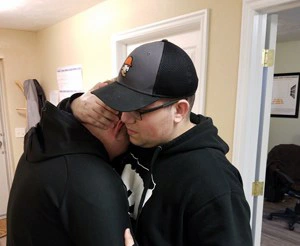
I find myself at a loss of words today. Today, of all days, when there should be so many words. Words of support, of hope, of help. Today is World Suicide Prevention Day. A day set aside for breaking the silence surrounding suicide. But I sit in silence, thinking of my son’s buddy who committed suicide at the end of the school year last year (he was 15); remembering my former coworker and next-door neighbor who took his own life just a few short months ago (his son is 8). I’ve come to the conclusion that there really are no words for the devastation left behind by suicide. However, I can use this blog today to raise awareness and offer some hope. So here it goes.
No One Thing Leads to Suicide
Depression, bipolar, anxiety, other mental health issues, and substance abuse can all lead to an increased risk of suicide, especially if left undiagnosed or untreated. Depression is the most common mental health condition associate with suicide. Although mental health disorders increase the risk of suicide, stress can also increase the risk as well.
Risk Factors
A risk factor is a characteristic of a person or their environment that increases the chances they will die by suicide. Risk factors can vary by age, culture, sex, and other characteristics. For example, the stress related to prejudice and discrimination (family rejection, bullying, violence) is a known risk factor among the LGBTQ youth. For middle-aged men, unemployment and divorce are risk factors. You should be aware of these risk factors in yourself as well as those around you.
Major risk factors for suicide include the following:
- Prior suicide attempt(s)
- Misuse/abuse of alcohol or other drugs
- Mental health disorders, especially depression and other mood disorders
- Access to lethal means
- Knowing someone who died by suicide, especially a family member
- Social isolation
- Chronic disease or disability
- Lack of access to behavioral health care
Warning Signs
Someone contemplating suicide will exhibit a range of behaviors, which are usually split into two categories: Immediate Risk and Serious Risk.
Some behaviors that could indicate and immediate risk of suicide include:
- Talking about wanting to die or to kill oneself
- Looking for a way to kill oneself, such as searching online or obtaining a gun
- Talking about feeling hopeless or having no reason to live
If you observe any of the above behaviors, you should call the National Suicide Prevention Lifeline or a mental health professional immediately.
The following are behaviors that would be considered Serious Risk, especially if the behavior is new, has increased, or seems related to a painful event (such as a loss or a change):
- Talking about feeling trapped or in unbearable pain
- Talking about being a burden to others
- Increasing the use of alcohol or drugs
- Acting anxious or agitated; behaving recklessly
- Sleeping too little or too much
- Withdrawing or feeling isolated
- Showing rage or talking about seeking revenge
- Displaying extreme mood swings
How Can You Help?
The picture looks bleak, but there is hope and help.
The most important thing you can do for a loved one who is struggling is to be available. Check on them. Ask how they are doing and let them know you are there to listen. Reassure them they are important to you, that you want them to be well, that you want them around.
The National Suicide Prevention Lifeline offers five steps to help someone who may be considering suicide.
- Ask – There is a common misconception that asking someone if they have/are considering killing themselves puts the idea in their head — it does not. Do not be afraid to ask!
- Keep them safe – If someone admits to considering suicide, it is important to seek immediate medical attention, especially if they shared their plan with you or have access to firearms, the number one cause of suicide (50%).
- Be there – Listen without judgment and with empathy. Let them know they have a shoulder to lean on when they need it.
- Help them connect – Help them find a support system to reach out to. Support is very important for someone battling the idea of suicide. Those who have attempted to harm themselves are often at risk of another attempt at suicide.
- Follow up – Following up could mean preventing thoughts of suicide or another attempt.
If you are considering suicide, call someone. Anyone. A friend, a neighbor, family members, religious leader, a mental health professional, the police, or the National Suicide Prevention Lifeline (1-800-273-8255).
Stay safe.
Hard Hat Training offers a Mental Health Awareness Training. For this and other safety trainings, visit us at www.hardhattraining.com.
